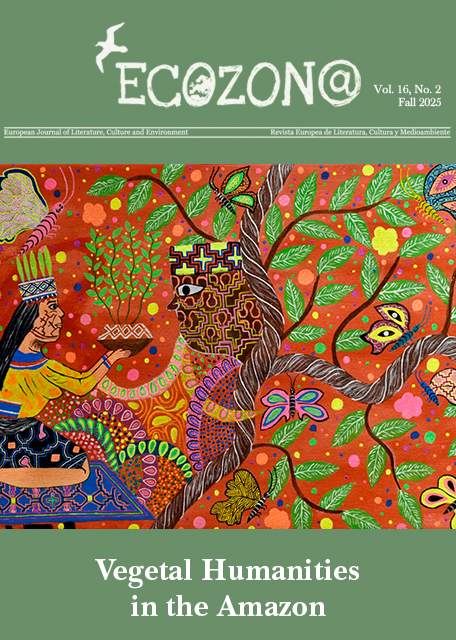A Sublime of the Ordinary in the Performance "Weathering" (2023) by Faye Driscoll
DOI:
https://doi.org/10.37536/ECOZONA.2025.16.1.5573Keywords:
dance, Faye Driscoll , ecology, sensoriality, materialismAbstract
In the dance performance Weathering (2023) by Faye Driscoll, the bodies of ten dancer-performers mingle on a platform that recalls a drifting iceberg. They seem to melt away in an extreme slowness as the platform rotates faster and faster. Sweat, soil, glycerin, citrus fruits and various objects imperceptibly intertwine with this exhausted flesh. The closed systems by means of which Western thought was able to extricate the subject from the chaos of the world and give it a leading position in the Anthropocene are gradually being opened up. Ecology, understood as fundamentally transitive and interdependent, is made tangible by the disruption of the normalized order of perception. Weathering’s version of the sublime borrows from the philosophical tradition—from the Pseudo-Longinus to Edmund Burke—its totalizing and striking character, as well as its setting in proximity of opposites, but gives a prominent place to the so-called “lower” senses and to the dermal and the intimate. Driscoll’s aim is to “sensitize” the audience and set it in motion to counteract the anesthesia generated by the saturation and acceleration characteristic of neoliberal societies. This materialist sublime focuses on the interiority and becoming of movement, expression and meaning, rather than on their actualization, and thus enables the audience to experience the astonishing processual quality of ecology. Weathering conjures up a “sublime of the ordinary” in that it humbly invites the audience to experience being, and by extension, being in the world.
Downloads
Downloads
Published
Issue
Section
License
Authors who publish with this journal agree to the following terms:
a) Authors retain copyright and grant the journal right of first publication with the work simultaneously licensed under a Creative Commons Attribution License that allows others to share the work with an acknowledgement of the work's authorship and initial publication in this journal (CC BY-NC for articles and CC BY-NC-ND for creative work, unless author requests otherwise.
b) Authors are able to enter into separate, additional contractual arrangements for the non-exclusive distribution of the journal's published version of the work (e.g., post it to an institutional repository or publish it in a book), with an acknowledgement of its initial publication in this journal.
c) Authors are permitted and encouraged to post their work online (e.g., in institutional repositories or on their website) prior to and during the submission process, as it can lead to productive exchanges, as well as earlier and greater citation of published work (See The Effect of Open Access).










